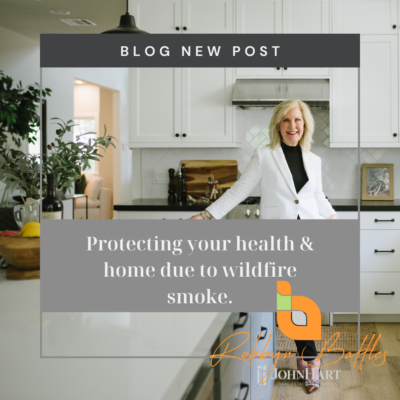 As wildfires continue to burn in our region, it’s important to stay mindful of the impact on air quality, even if the fires are miles away. Smoke and particulate matter can travel long distances, creating health risks, especially for those with respiratory conditions, children, the elderly, and pregnant women. Here are some simple tips to minimize your exposure to wildfire smoke and keep the air inside your home and vehicles clean.
As wildfires continue to burn in our region, it’s important to stay mindful of the impact on air quality, even if the fires are miles away. Smoke and particulate matter can travel long distances, creating health risks, especially for those with respiratory conditions, children, the elderly, and pregnant women. Here are some simple tips to minimize your exposure to wildfire smoke and keep the air inside your home and vehicles clean.
1. Stay Indoors as Much as Possible
Limit outdoor activities, especially strenuous exercise, when air quality is poor. The safest place to be during smoky conditions is indoors. Pay close attention to local air quality reports, which often include a color-coded Air Quality Index (AQI) to help guide your activity level.
2. Close Windows and Doors
Seal your home by keeping all windows and doors closed to prevent smoke from entering. If possible, use weather stripping or towels to block gaps under doors and windows. Remember to avoid using whole-house fans or window air conditioners unless they have a HEPA filter, as these can bring smoky air indoors.
3. Run an Air Purifier
If you have an air purifier, particularly one with a HEPA filter, run it to help remove small particles from indoor air. For rooms where you spend the most time, like bedrooms and living rooms, consider using portable air cleaners. Avoid using devices that produce ozone, which can worsen air quality.
4. Create a Clean Air Room
If it’s difficult to keep your entire home smoke-free, designate one room as a “clean air room.” Choose a room with minimal windows and doors and set up a HEPA air purifier. Spend most of your time in this room during smoky periods.
5. Use Your Air Conditioner Wisely
If you use an air conditioner, ensure it’s set to recirculate indoor air, rather than pulling in air from outside. In your vehicle, keep windows closed and use the recirculation mode on your air conditioning system to avoid drawing in smoky air while you drive.
6. Avoid Activities That Increase Indoor Pollution
When outdoor air quality is poor, it’s essential to reduce additional sources of indoor pollution. Avoid burning candles, using gas stoves, and smoking indoors. These activities can further degrade indoor air quality and make the environment more hazardous.
7. Wear a Mask When Necessary
If you must go outside, consider wearing a mask to filter out fine particles. N95 respirators or KN95 masks are effective at reducing exposure to harmful particles from wildfire smoke. Simple cloth masks or bandanas won’t protect against smoke.
8. Monitor Air Quality Regularly
Use apps or websites to monitor real-time air quality in your area. The Air Quality Index (AQI) provides a clear guide for understanding whether the air is safe to breathe and helps you plan your day accordingly. A higher AQI means greater pollution and more health risks.
9. Limit Exposure in Your Vehicle
If you’re driving through areas affected by wildfire smoke, keep windows rolled up, and use your vehicle’s air recirculation mode to avoid bringing smoky air inside. For longer trips, take breaks in areas with better air quality if possible.
10: Be sure to clean the air filters in your car on a regular basis.
11. Stay Hydrated and Take Care of Your Health
Wildfire smoke can irritate your respiratory system and make it harder to breathe, so it’s essential to stay hydrated. Drinking plenty of water helps keep your lungs and airways moist. If you have pre-existing conditions like asthma, ensure you have all necessary medications on hand, and don’t hesitate to reach out to your healthcare provider if you experience difficulty breathing or other symptoms.
Article Information provided by:
Cherry Langston
Weed Army Community Hospital
FORT IRWIN, Calif. –

